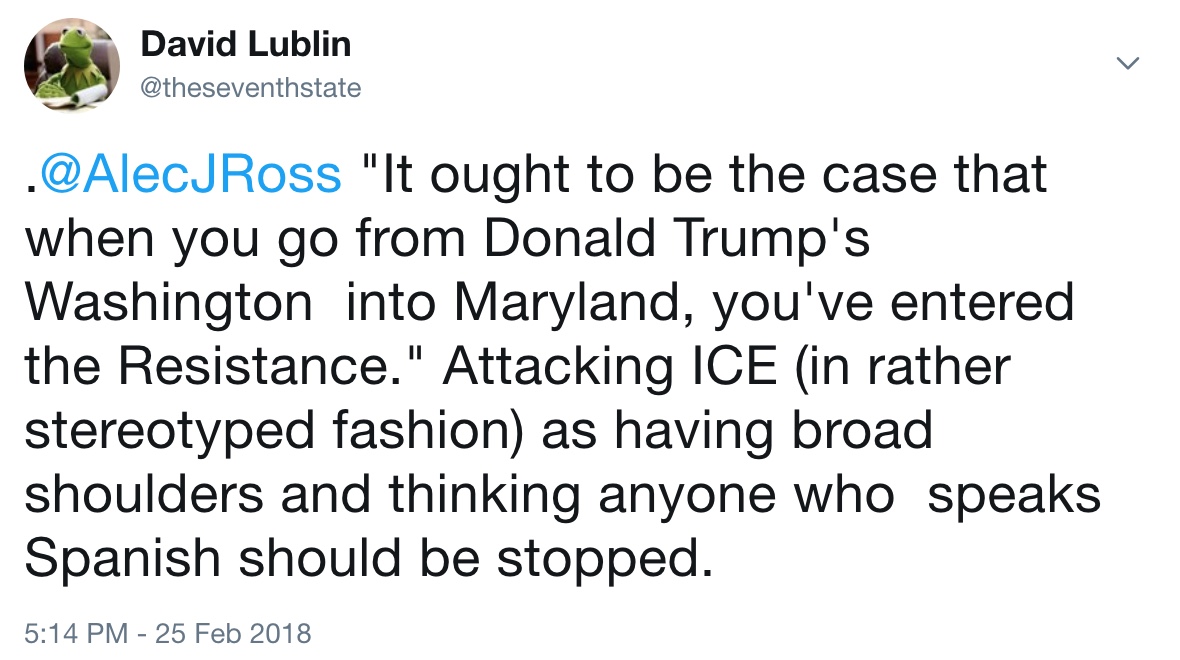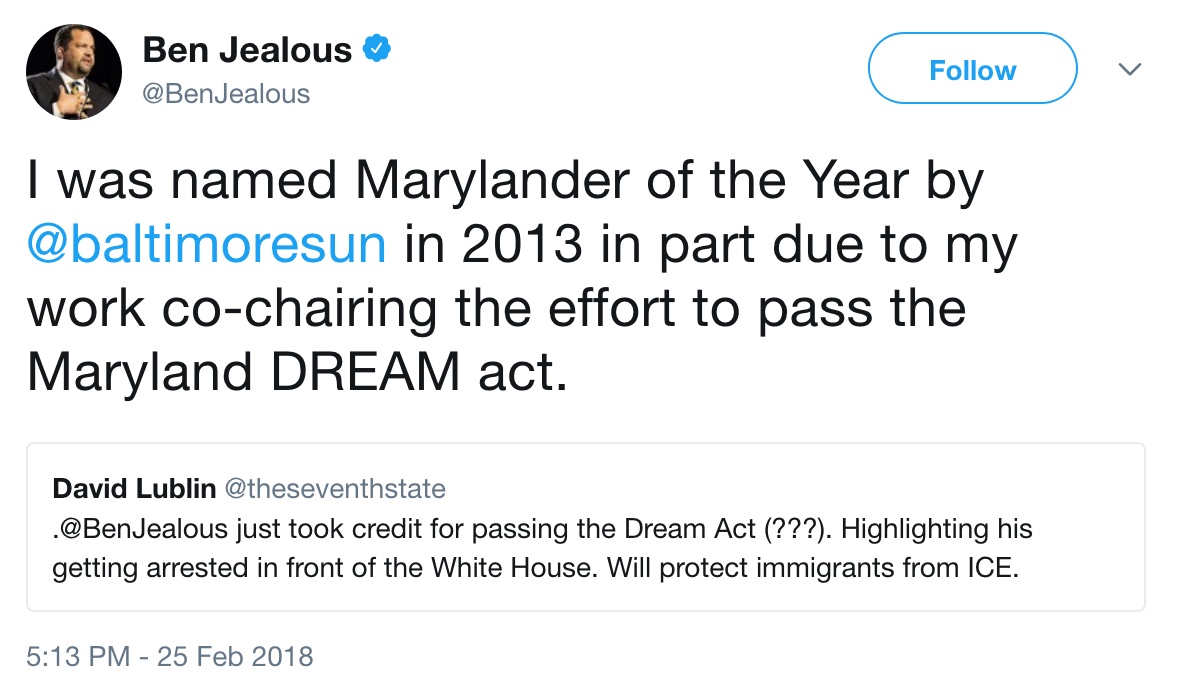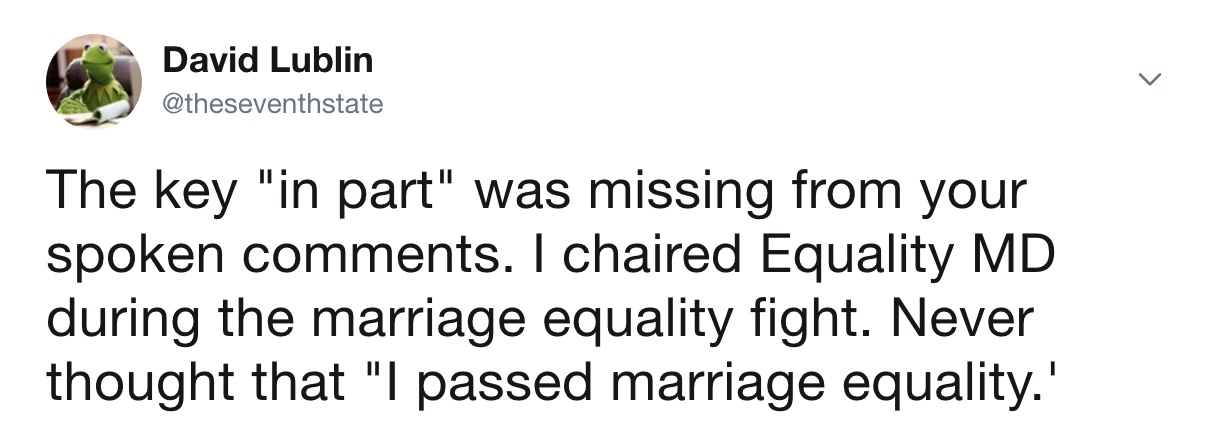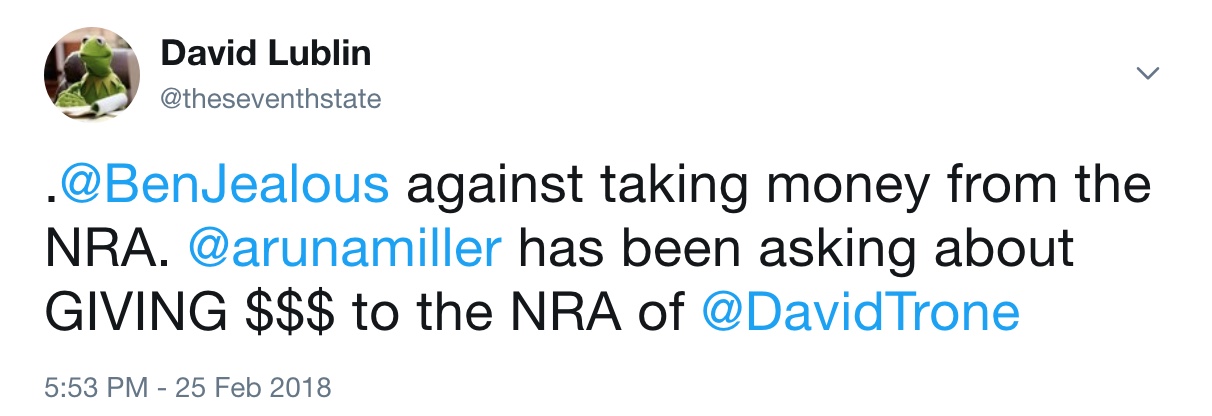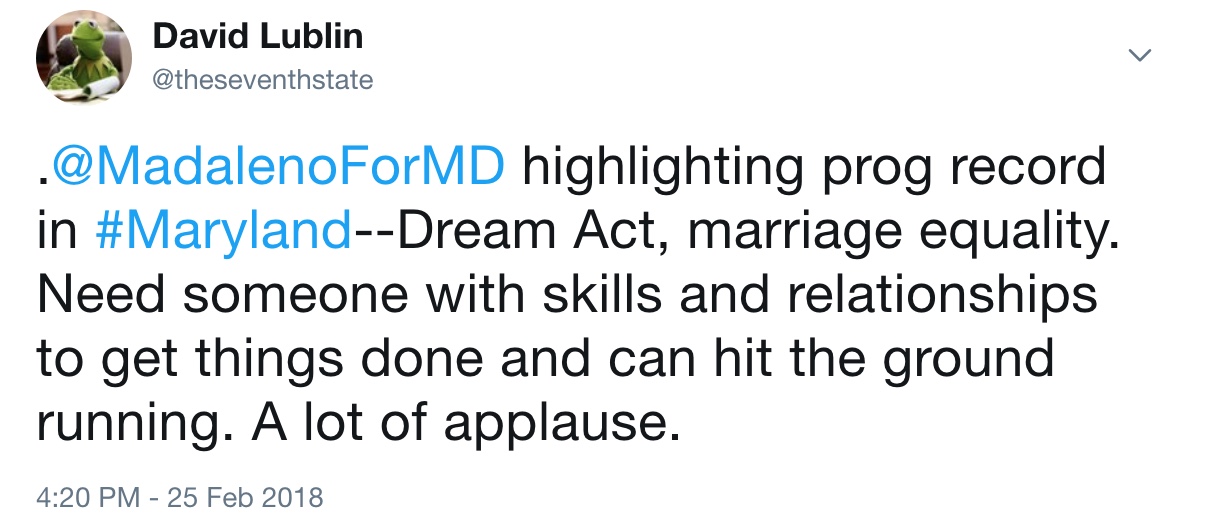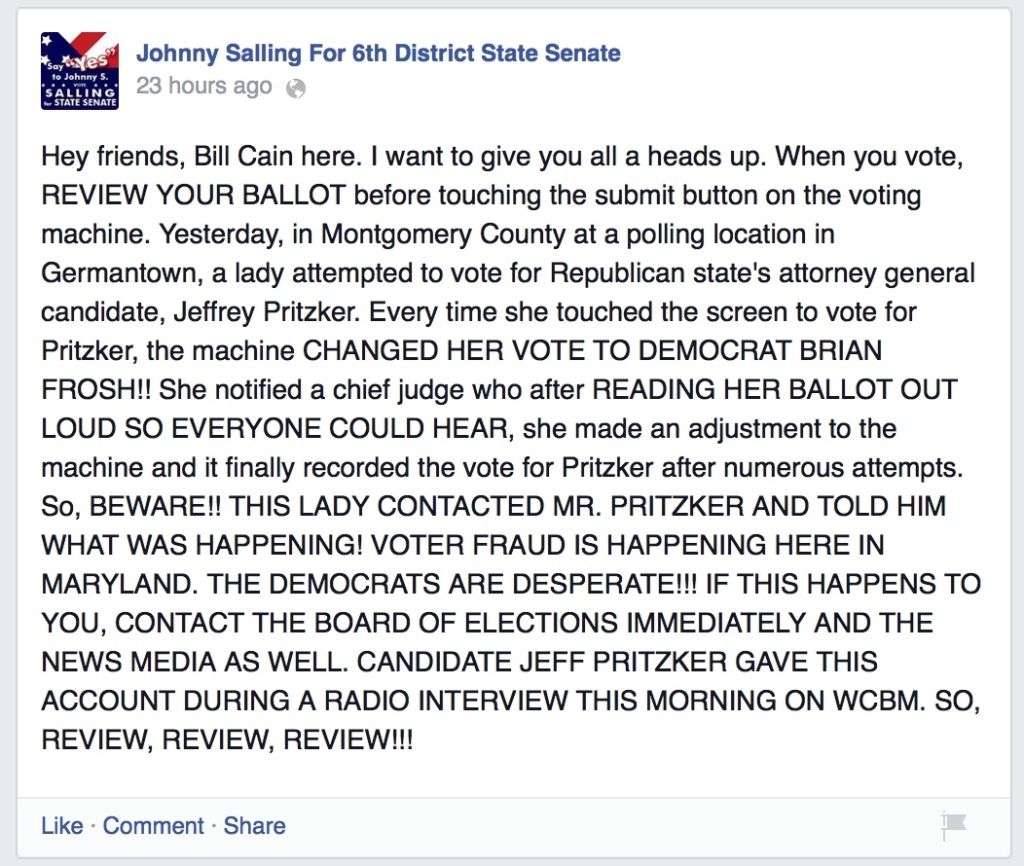I live tweeted last night’s debate in Takoma Park. This post highlights moments that stood out in my mind. During the fast-paced debate, I did my best to capture what candidates actually said, either as quote or a paraphrase, along with provide analysis along with many typos. Rushern Baker skipped the debate.
Alec Ross Goes Extreme on Immigration
A theme for Alec Ross was his effort to stand out as a different kind of candidate, unafraid to criticize Democrats for being insufficiently progressive. He pejoratively stereotyped ICE workers and called for sending out state troopers to fight them if needed to that end:
Ben Jealous Over Credit Claims?
Ben Jealous and I had an exchange on Twitter during the debate regarding his taking credit for the MD DREAM Act’s passage that paralleled Adam Pagnucco’s past critique:
Jealous’s followers certainly agreed with him on Twitter.
Jealous on Corruption and the NRA
Jealous also stood out for his attack on corruption and call for Baltimore Democrat Sen. Nat Oaks to resign:
He also attacked taking NRA money–very popular based on the retweets:
The problem with Jealous’s severe attacks on any Democrat who takes money from the NRA is that he co-chaired Bernie Sanders presidential campaign. The current anti-gun moment is not ideal for Sanders, who originally won election to Congress with heavy NRA support. While Sanders is no longer the pal of the NRA, he has a past of opposing the Brady Bill and many other pro-gun votes. Awkward.
Said and Unsaid by Krish Vignarajah
Krish Vignarajah is razor sharp and may have been the smartest person on the stage. She had one of the best moments of the debate with her linkage of Hogan’s Amazon package and the lack of funds to heat Baltimore schools.

Sometimes, however, what she left unsaid seemed as loud as the points she was making:
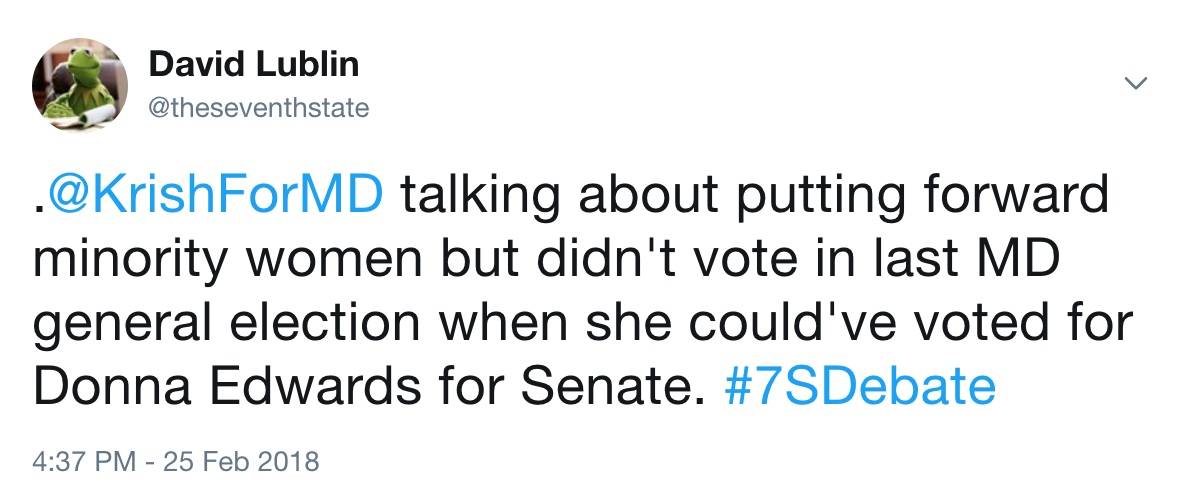 Of course, the doofus who wrote the tweet should have said primary instead of general election. However, District 18 Delegate Candidate Mila Johns was even sharper:
Of course, the doofus who wrote the tweet should have said primary instead of general election. However, District 18 Delegate Candidate Mila Johns was even sharper:
Vignaranjah still has not filed.
Rich Madaleno Relentless on Republicans
Unsurprisingly, all of the candidates weren’t keen on Hogan or Trump. Rich Madaleno’s remarks still stood out.


Along with Kevin Kamenetz, Madaleno made the tough sell in anti-establishment times that we need someone with experience. He contended that he and his running mate, Luwanda Jenkins, had made change and had the experience to do so as governor:
Kevin Kamenetz and Jim Shea
These two guys didn’t have moments. By all rights, Baltimore County Executive Kevin Kamenetz should be a top contender. He is county executive of a swing county, clearly more knowledgeable than many of his rivals on a lot of issues due to having grappled with them in office, and does his best to link them to personal stories from his own life or time as county exec.
Yet, Kamenetz is simply not a natural debater and seems a bit awkward on the stage despite clearly having worked on honing his pitch. He was at his best when challenged due to his sureness and utter willingness to fight back. But it just didn’t feel like his moment as he didn’t connect with his audience.
Jim Shea seems earnest, well-meaning, smart and steeped in the community. He has been involved in a litany of efforts to improve Baltimore and Maryland for years. He was seated next to Vignarajah and the contrast could not have been greater. He’s an an unexciting and unmemorable speaker who had all of the specific, deep knowledge of Maryland she lacked. They should consider teaming up.

